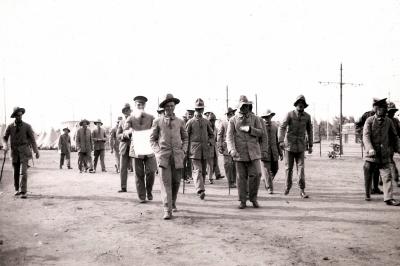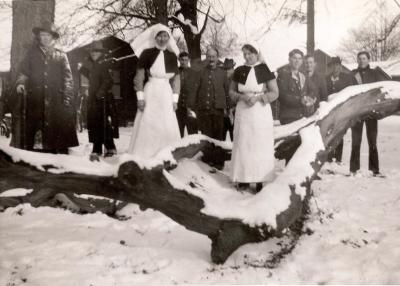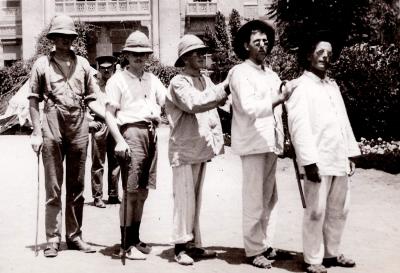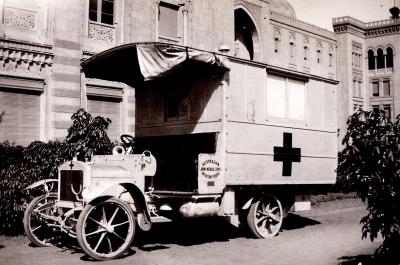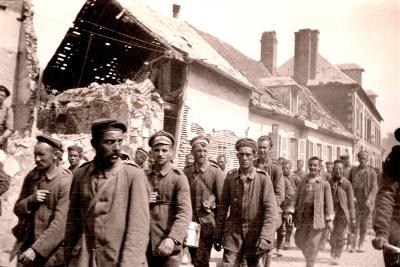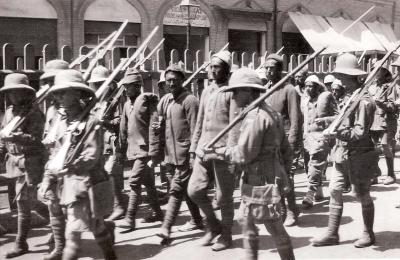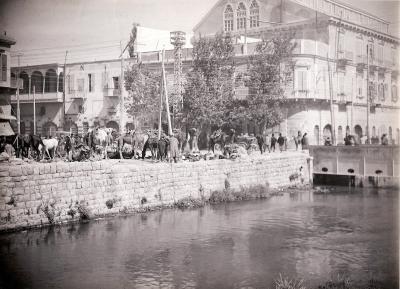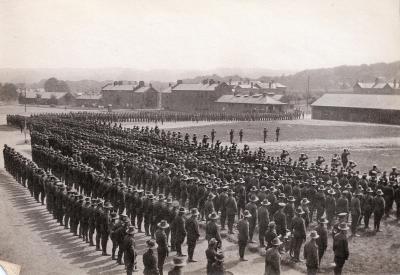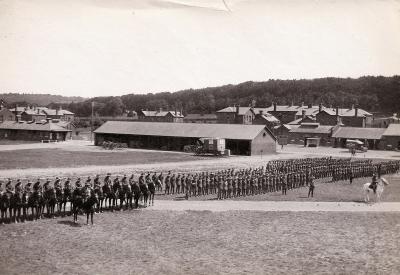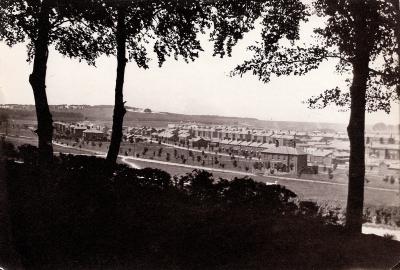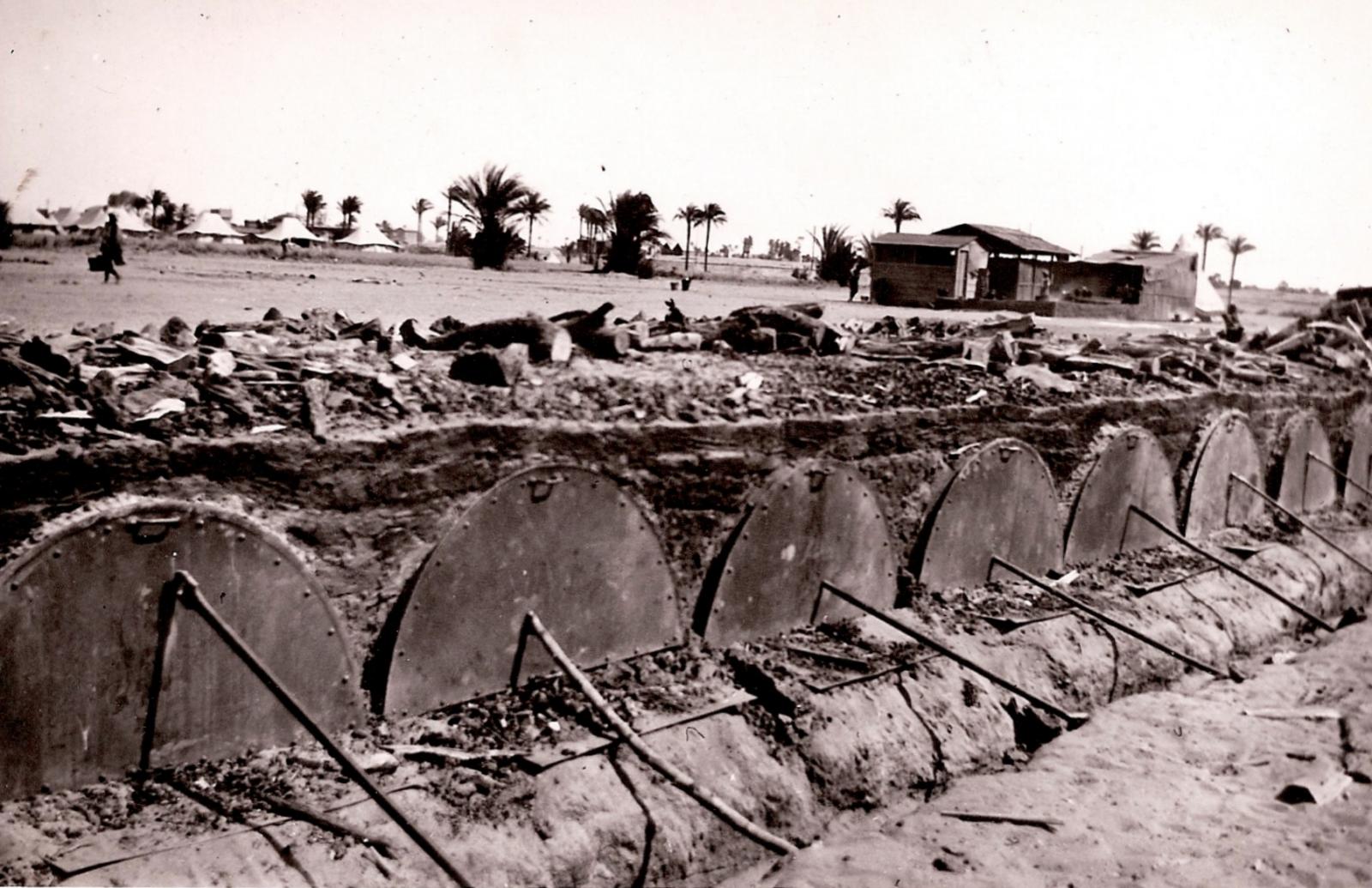World War 1, Middle East Egypt, 1915
1915Long-range view of camp in Egypt with row of Aldershot ovens in the foreground.
The Aldershot oven was a 'ground oven', in which the fire burns in the oven itself and has to be raked out before the bread is put in. This oven type is an extremely simple device, and follows a form which probably pre-dates recorded history. This particular pattern is English, and almost certainly 19th century in design. The bread is baked by the heat retained in the walls of the oven.
The oven is comprised of two sheets of iron, approximately 1500mm in length, rolled into a semi-circular shape. Each sheet is reinforced on each end and in the middle with iron bar, which is riveted to the sheet. One of the sheets is slightly larger than the other, with a lip that slips under the rim of the other sheet. The oven includes two semi circular ends. All metal components show mild surface corrosion.
Aldershot ovens were erected in a row with a trench in front and with their backs and tops covered with turf or clay. Wood fires were set inside ovens and when a sufficient temperature was obtained fires are drawn, all ashes removed, and nine tins containing a total of 54 loaves at 2lbs each were set inside. The front of the oven was then placed in position and sealed. 1 lb of wood gave sufficient heat to bake 1 lb bread. 8 ovens could bake sufficient bread for an infantry brigade, in 5 batches.
These ovens were found in use throughout both World Wars, in circumstances where more permanent, industrial drawplate steam ovens would not have been available. Most bread baked on the Western Front originated in massive bakeries at Calais, capable of producing 500,000 lbs of bread per day.
Details
Details
Australian Army Museum of Western Australia
Australian Army Museum of Western Australia
Other items from Australian Army Museum of Western Australia
- World War 1, Middle East, 1915
- World War 1, Europe, 1916
- World War 1, Europe, 1916
- World War 1, Europe, 1916
- World War 1, Europe, 1917
- World War 1, Middle East, 1915
- World War 1, Middle East, Ottoman prisoners of war. 1915
- World War 1, Middle East, 10 Australian Light Horse, 1918
- World War 1, England Wiltshire Tidworth, 1917
- World War 1, Europe, MOORE, 1917
- World War 1, England Wiltshire Tidworth, 1917
- World War 1, England Wiltshire Tidworth, 1917
